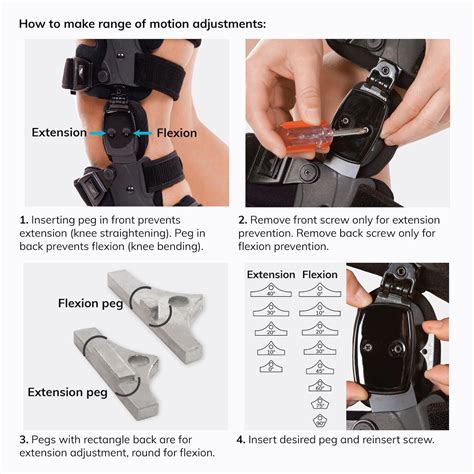How to Adjust Your Knee Brace for a Perfect Fit
Knee braces offer crucial support and stability, but only if they fit correctly. An ill-fitting brace can restrict movement, cause discomfort, or even worsen your injury. This comprehensive guide will walk you through the process of adjusting your knee brace for a perfect, personalized fit, maximizing its effectiveness and minimizing any potential problems. We'll cover various brace types and address common fitting issues.
Understanding Your Knee Brace Type
Before adjusting your brace, identify its type. Different braces have different adjustment mechanisms. Common types include:
- Hinged Knee Braces: These offer significant support and often feature adjustable hinges, straps, and closures.
- Sleeved Knee Braces: These provide compression and warmth, usually with adjustable straps for varying compression levels.
- Wraparound Knee Braces: These are often simpler, using straps for compression and support.
How to Properly Adjust Your Knee Brace: A Step-by-Step Guide
The exact adjustment process varies depending on your brace's design, but these general steps apply to most:
-
Put on the brace: Ensure the brace is positioned correctly on your knee. The patella (kneecap) should be centered within the brace's opening or designated area. For hinged braces, ensure the hinges align with your knee joint's natural movement.
-
Initial Strap Adjustment: Most braces have straps to secure them to your leg. Begin by fastening the straps loosely. Don't overtighten them initially.
-
Assess Comfort and Support: Stand and move your knee through its range of motion. Does the brace feel comfortable? Is there any pinching or excessive pressure? Note any areas of discomfort.
-
Fine-Tune Strap Adjustments: Based on your assessment, adjust the straps. If you experience pinching, loosen the straps in that area. If the brace feels too loose, tighten the straps, evenly distributing the pressure around your knee.
-
Hinge Adjustments (for hinged braces): Hinged braces often allow you to adjust the range of motion permitted by the hinges. Consult your brace's instructions for the specific adjustment process. Start with a more restricted range of motion and gradually increase it as you feel comfortable.
-
Check for Even Pressure: Once all straps are adjusted, check that the pressure is evenly distributed around your knee. You should feel secure support without any constricting pressure points.
-
Walk and Test: Test your range of motion while wearing the brace. Walk around, bend your knee, and perform any other movements relevant to your activity level. If the brace feels comfortable and provides adequate support during these movements, you've likely achieved a good fit.
Common Knee Brace Fitting Problems and Solutions
H2: My knee brace feels too tight.
If your knee brace feels too tight, it might restrict blood flow and cause discomfort. Loosen the straps, particularly around any areas causing pinching or numbness. If the problem persists, you might need a larger size.
H2: My knee brace feels too loose.
A loose brace offers inadequate support. Tighten the straps evenly to secure the brace firmly to your leg. If you still feel insufficient support, you might need a smaller size.
H2: My knee brace is uncomfortable.
Discomfort often indicates uneven pressure or improper placement. Check for any straps causing pressure points. If the discomfort is from the brace's material, consider trying a different type or material.
H2: How often should I adjust my knee brace?
You should check the fit of your knee brace regularly, especially after extended use or if you notice any changes in your knee. Minor adjustments are often necessary throughout the day.
H2: What if I'm still having trouble adjusting my knee brace?
If you continue to experience problems with your knee brace despite following these instructions, consult with a physical therapist or your doctor. They can help you determine the correct size, proper fit, and assist you in making adjustments. They can also help determine if a different type of brace might be more suitable for your needs.
Remember: A properly adjusted knee brace significantly improves support, comfort, and recovery. Take your time with the adjustments and don't hesitate to seek professional guidance if needed.

